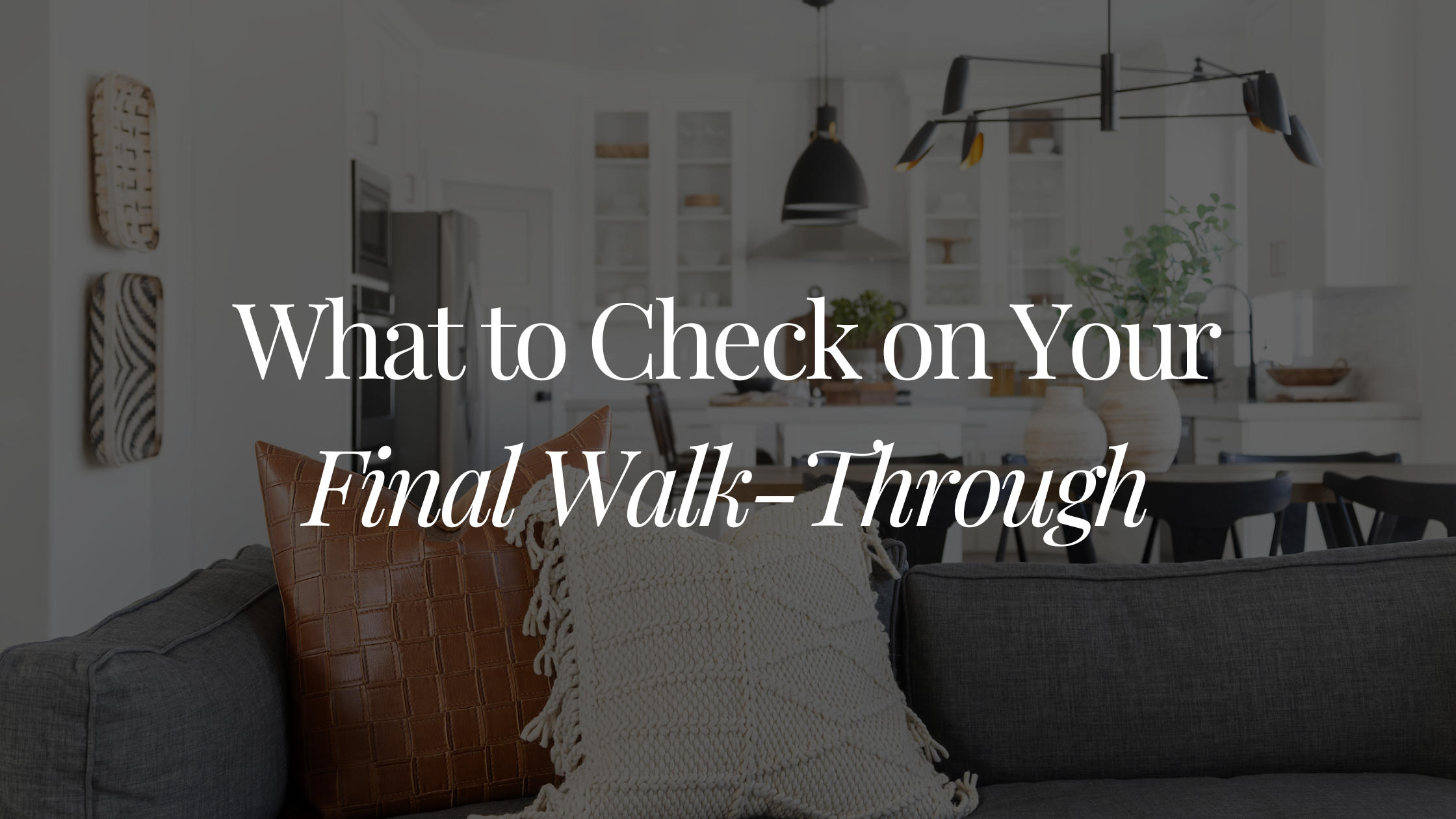The final walk-through on your new home is an exciting event. It means you have successfully maneuvered through negotiations, inspections, and financing approval, and are on the verge of signing your closing papers. Most buyers attend the final walk-through with thoughts of furniture placement and paint colors in their heads. But the walk-through is about more than just making sure your favorite chair will fit by the fireplace. Be sure to do your due diligence to make sure there are no issues that should be resolved before you reach the closing table.
The purpose of the final walk-through is to ascertain that the home is being conveyed to you in the same condition it was when you agreed to purchase it. Here are a few of the things you should check:
1) Make sure no damage has occurred to the home that the sellers are responsible for repairing. Weather conditions or careless movers can cause accidental damage, and old and forgotten damage may be uncovered when the sellers’ belongings are removed.
2) Check that appliances are still in working order and no new plumbing or electrical issues have popped up. While you aren’t doing a complete home inspection, you can visually check for obvious problems that should be repaired before you move in.
3) Confirm that items contractually conveying are present. If the sellers agreed to leave particular furniture, décor, or equipment, see that it has not been removed.
4) Make certain the sellers have removed all their belongings. You don’t want to arrive with the moving truck only to find out that the sellers left behind an assortment of unwanted furniture or trash. The sellers are responsible for removing everything that doesn’t convey with the sale. Depending on how smoothly the escrow is going, you may want to put this in writing to ensure the sellers will remove their items. Unfortunately, buyers are occasionally left with the extra work or expense of disposing of/donating left-behind items.


 Facebook
Facebook
 X
X
 Pinterest
Pinterest
 Copy Link
Copy Link


